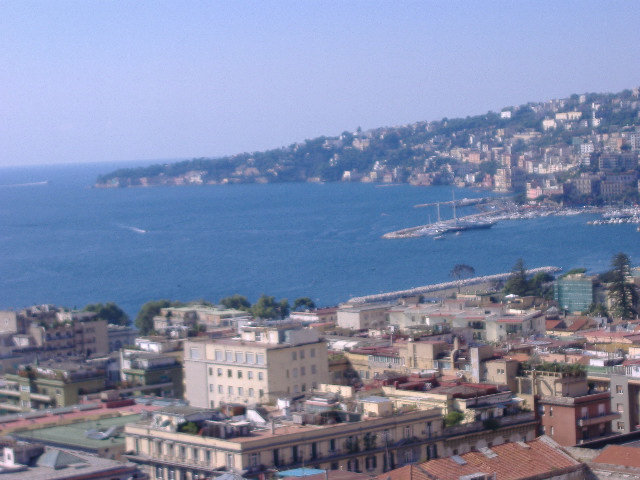Interlude: From de Jorio to Troisi
Massimo Troisi, the late Neapolitan actor devoted to napoletanità [27], makes comically explicit the synecdochic function of Neapolitan gesture:
“Veramente c’abbiamo un lavoretto. Allora mio marito ha detto, va bene. Se si tratta di lavorare di meno tanto di guadagnato. Chist’ ha detto no. Forse non ci siamo capiti. Ho detto che teng’ per voi un lavoretto. Mio marito ha detto, un lavoretto, scusate lo dice la stessa parola, lavoretto, si lavora di meno. Chist’ dice no, non ci siamo capiti. Teng’ per voi un lavore...Non guardate a me. Guardate ‘a mano” [28].
In this skit, Troisi is playing a Neapolitan woman, who talks about the trouble she has with her husband. In this scene, Troisi’s hand (open palm, palm down, moving in a circular motion as if polishing a table top) represents the nature of the job being offered to the husband (an under the table job). But in saying, “Don’t look at me. Look at my hand,” the hand becomes more than the truth behind the words; the hand is the gesturing person. Gesture scientist David McNeill writes that the hand that gestures is symbolic: “The hand is not a hand,”[29] but rather that which it is mobilized to express. I would argue that the Neapolitan hand that gestures is symbolic, not only of the thoughts or feelings of the gesturer, but also of the gesturer’s cultural identity: it is not just any hand, it is a Neapolitan hand, the “spokeshand” for Neapolitan selfhood.
Contemporary Neapolitan gestural practice and the use of the dialect continues to keep the outsider on the outside: “The Neapolitan dialect seems to be metaphor itself...Among street vendors, especially, metaphors are heard that are so witty and clever that not only foreigners, but even our own provincials do not understand anything”[30]. Everyone, even a provincial from one kilometer outside the city, is an outsider, and thus the Neapolitan “I” is never them. Private life may be lived in the public sphere on hot summer nights among the inhabitants of the bassi, and public fighting may be a theatricalization that serves to keep public order [31], but in my view, these practices serve primarily to keep the stranger estranged.
27 Troisi’s theater group was called La Smorfia after the Neapolitan book of numbers, as well as being a reference to making funny faces. In his films and interviews, he spoke in Neapolitan dialect and produced exaggerated (even for a Neapolitan) gestures. Troisi was absorbed into Italian culture as “one of us” even as he forcefully presented himself as Neapolitan.
28 Troisi, Massimo, Lello Arena, and Enzo Decaro. “L’annunciazione.” La Smorfia, 1977.
29 McNeill, David. Hand and Mind: What Gestures Reveal About Thought. Chicago: The University of Chicago Press, 1992.
30 De Jorio, 271.
31 “De Jorio notes that, with the crucial participation of bystanders, quarrels often become transformed into an event which everyone enjoys, including the litigants themselves. This process may well have developed as a means of social control, keeping quarrels in check and preventing them from becoming dangerous.” Kendon, ciii.
Tuesday, June 23, 2009
Subscribe to:
Post Comments (Atom)


1 comment:
Neapolitans are Neapolitans, we are not Italians, we are greek-souled and completely different from northern Italians. Neapolitans are ancient culture and civilation, Neapolitans are all the people in the contanital part of southern Italy.
Nowadays socioeconomic backwardness has an historical explanation in the unification of Italy, Neapolitans and Sicilians become colonies of the new made Italian state, with a bloody genocide. Read more here: http://neapolitan-independentism.blogspot.com/
Post a Comment